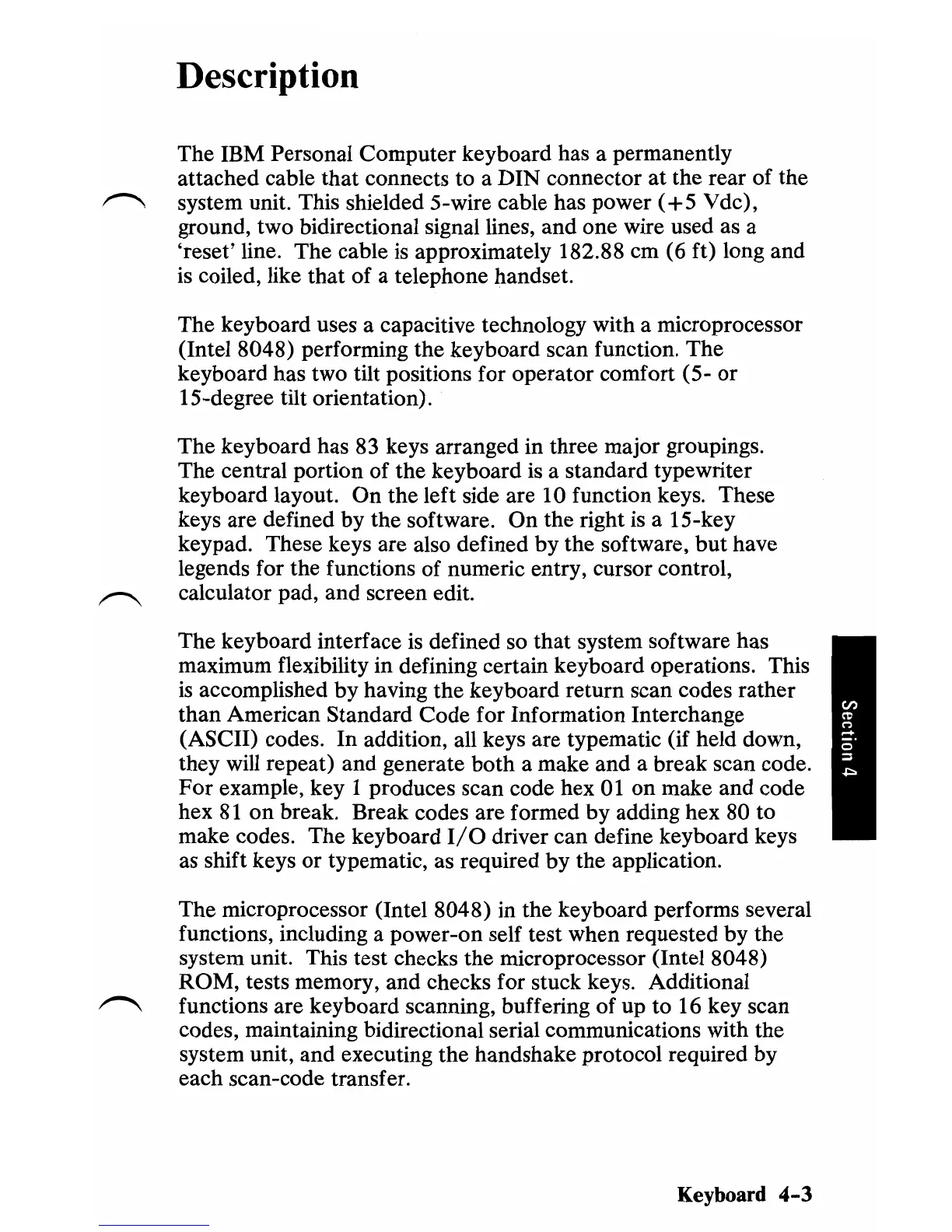~
~
~
Description
The IBM Personal Computer keyboard has a permanently
attached cable
that
connects to a DIN connector
at
the rear of the
system unit. This shielded 5-wire cable has power
(+5
Vdc),
ground, two bidirectional signal lines, and one wire used as a
'reset'line. The cable
is
approximately 182.88 cm (6 ft) long and
is
coiled, like
that
of a telephone handset.
The keyboard uses a capacitive technology with a microprocessor
(Intel 8048) performing the keyboard scan function. The
keyboard has two tilt positions for operator comfort (5-
or
15-degree tilt orientation).
The keyboard has 83 keys arranged in three major groupings.
The central portion of the keyboard
is
a standard typewriter
keyboard layout.
On
the left side are 10 function keys. These
keys are defined by the software.
On
the right
is
a 15-key
keypad. These keys are also defined by the software,
but
have
legends for the functions of numeric entry, cursor control,
calculator pad, and screen edit.
The keyboard interface
is
defined so that system software has
maximum flexibility in defining certain keyboard operations. This
is
accomplished by having the keyboard return scan codes rather
than American Standard Code for Information Interchange
(ASCII) codes. In addition, all keys are typematic (if held down,
they will repeat) and generate both a make and a break scan code.
For
example, key 1 produces scan code hex
01
on
make and code
hex 81
on
break. Break codes are formed by adding hex 80 to
make codes. The keyboard
II
0 driver can define keyboard keys
as shift keys or typematic, as required by the application.
The microprocessor (Intel 8048) in the keyboard performs several
functions, including a power-on self test when requested
by
the
system unit. This test checks the microprocessor (Intel 8048)
ROM, tests memory, and checks for stuck keys. Additional
functions are keyboard scanning, buffering of up to 16 key scan
codes, maintaining bidirectional serial communications with the
system unit, and executing the handshake protocol required by
each scan-code transfer.
Keyboard
4-3
